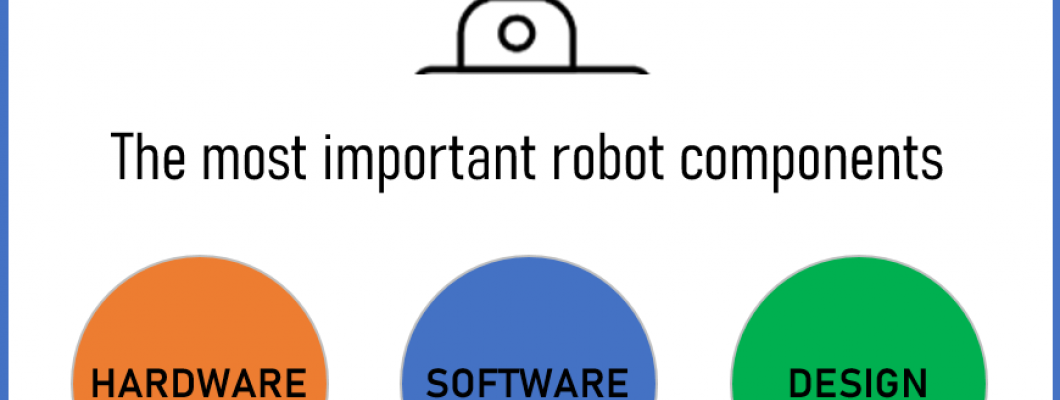
The components of a robot can vary widely depending on its intended purpose and functionality. However, I can provide a general overview of the most important components in terms of hardware, software, and design:
Hardware Components
a. Actuators
b. Sensors
c. Power Supply
d. Control System
e. Mechanical Structure
- Motors: Responsible for providing movement to the robot.
- Servos: Used for precise control of joint movements.
- Position and Orientation Sensors: Provide information about the robot's location and orientation.
- Proximity Sensors: Detect the presence of objects in the robot's vicinity.
- Vision Systems (Cameras): Capture visual information.
- Inertial Measurement Units (IMUs): Measure acceleration, angular velocity, and sometimes magnetic field information.
- Force/Torque Sensors: Measure forces and torques applied to the robot.
- Batteries or other power sources to provide energy for the robot's operation.
- Microcontroller or Processor: The "brain" of the robot that processes information from sensors and sends commands to actuators.
- Motor Controllers: Interface between the microcontroller and motors, ensuring precise control.
- Frame, chassis, and other physical components that define the robot's structure.
- Tools or devices at the end of robotic arms or manipulators, designed for specific tasks (e.g., grippers, welding tools).
Software Components
a. Operating System
b. Control Algorithms
c. Sensor Fusion Software
d. Path Planning and Navigation Software
e. Machine Learning and AI
f. Human-Machine Interface (HMI)
- Controls the basic functions of the robot and manages hardware resources.
- Proportional-Integral-Derivative (PID) controllers and other algorithms for precise control of movements and actions.
- Integrates data from multiple sensors to provide a more comprehensive understanding of the robot's environment.
- Determines the optimal path for the robot to move from one point to another, avoiding obstacles.
- Enables the robot to learn and adapt to its environment, recognize objects, and make decisions.
- Software that facilitates communication between the robot and human operators.
Design Considerations
a. Kinematics and Dynamics
b. Safety Features
c. Ease of Maintenance
d. Scalability
e. Cost-effectiveness
f. Environmental Adaptability
- Designing the mechanical structure to ensure proper movement and stability.
- Emergency stop mechanisms, collision detection, and other safety measures to protect humans and the robot.
- Designing the robot for easy maintenance and repair.
- Consideration for future upgrades and modifications.
- Balancing performance with cost constraints.
- Considering the operating environment and designing the robot to handle specific conditions.
A successful robot design requires careful consideration of both hardware and software components, as well as thoughtful attention to the overall design principles to meet the intended functionality and performance goals.
Global Robot Marketplace
